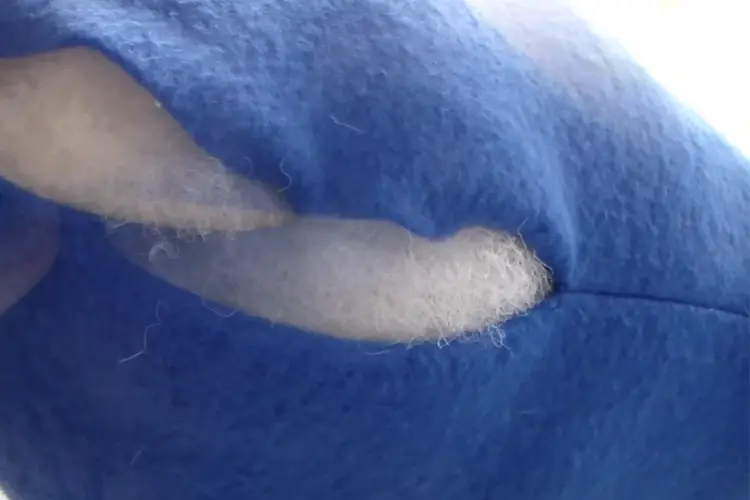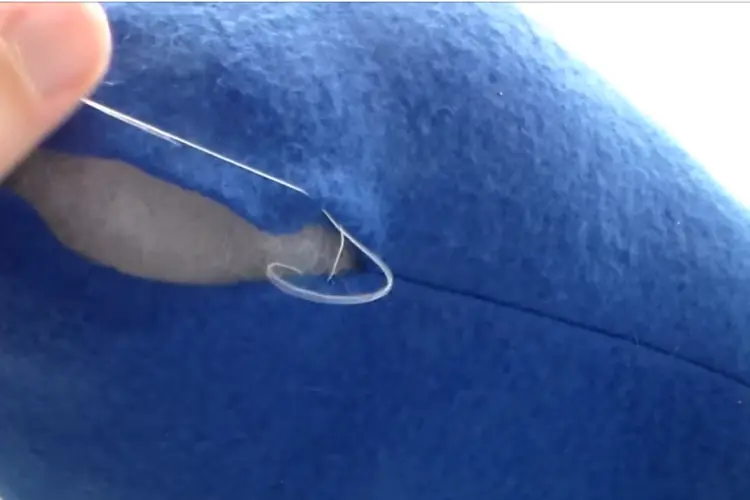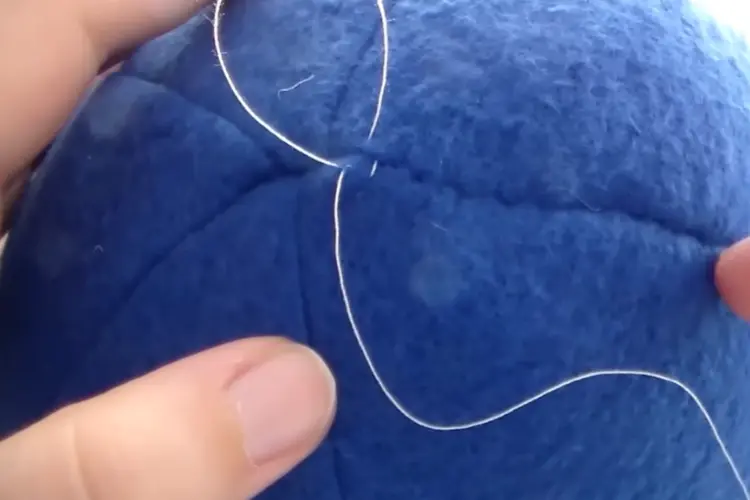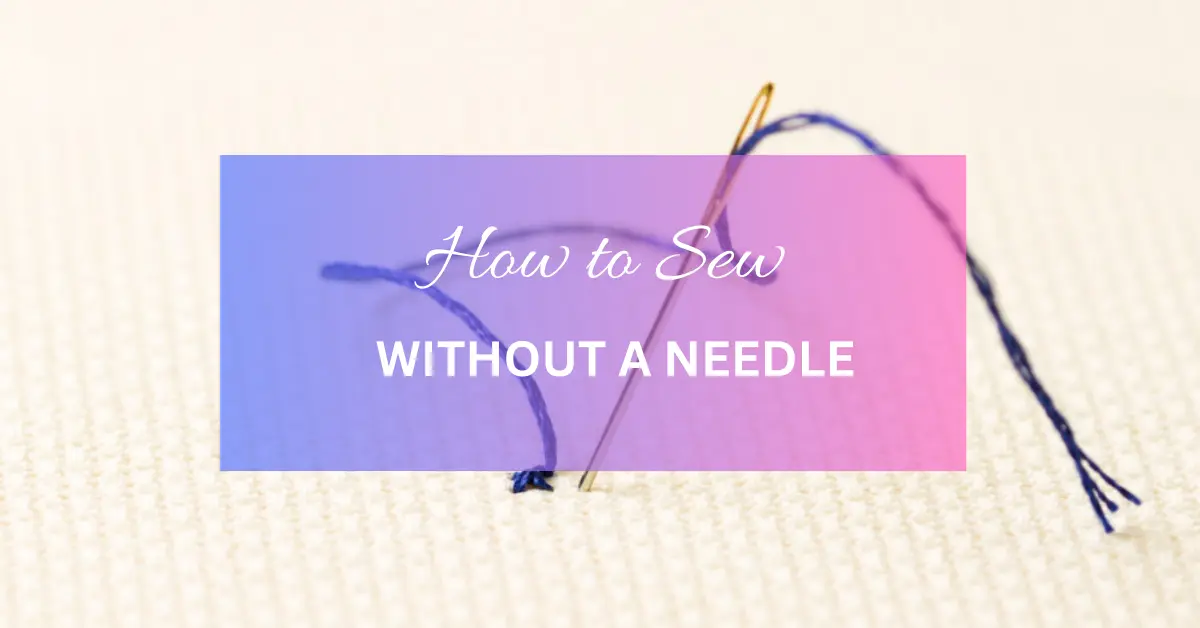How to Sew Without a Needle: 15 Creative Ways
In DIY crafts and repairs, sewing is an essential skill. But what if you find yourself in a pinch and without a needle?
Don’t worry! Plenty of creative alternatives can help you sew without a needle. In this article, we’ll explore 15 innovative methods to sew without a needle, using everyday items you probably have lying around.
So, let’s dive right in and discover these ingenious solutions!
Introduction
Sewing is invaluable, but sometimes a needle might be out of reach. Whether you’re on the go or simply don’t have an arrow at hand, these alternative sewing methods can save the day.
From safety pins to paper clips, we’ve covered you with innovative ways to repair and create without the traditional needle and thread.
Sewing Essentials You’ll Need
Before we dive into the methods, gather a few essentials:
- Safety pins
- Tapestry needles
- Fabric glue
- Adhesive hemming tape
- Buttons, thread
- Dental floss, hair
- A paper clip
- Embroidery floss
- Bobby pins
- A flat iron
- Zip ties
- A fork
- Rubber bands.
These everyday items will be the building blocks of your needle-free sewing adventure.

1. Safety Pins Stitching
Safety pins are versatile tools that can hold fabrics together securely. Use them to stitch along seams or attach patches without needing a needle.
They’re perfect for temporary fixes and quick repairs.
2. Tapestry Needles Technique
Tapestry needles have more enormous eyes, making them suitable for thicker threads or materials.
Thread the tapestry needle with embroidery floss or a thicker line, then weave it through the fabric to create stitches.
3. Adhesive Hemming

Adhesive hemming tape is a lifesaver for quick hems. Simply fold the fabric where you want the hem, place the adhesive tape, and use a flat iron to secure the bond. No needle is required!
4. Fabric Glue Bonding
Fabric glue is excellent for creating strong bonds between fabric pieces. Apply a small amount to the edges you want to join and press them together. Let it dry thoroughly for a durable bond.
5. Button Thread Looping
You can create loops that mimic stitches if you have buttons and thread. Sew the button onto one piece of fabric, and then loop the cable through the buttonholes on the other piece.
6. Knotless Stitch with Hair

Believe it or not, hair can create a knotless stitch. Hold the edges of the fabric together and tie a small section of hair around them. Trim any excess hair for a seamless finish.
7. Dental Floss Fixing
Dental floss is surprisingly sturdy and can work as a substitute for thread. Use it to stitch fabrics together or even create decorative accents.
8. Paper Clip Stitch
Unbend a paper clip and use it to secure fabrics together. It works particularly well for lightweight materials and temporary fixes.
9. Embroidery Floss Embellishment
Embroidery floss can be used for more than just embroidery. It’s thicker than regular thread, creating bold decorative stitches or holding fabrics together.
10. Using a Bobby Pin

Open up a bobby pin and use its legs to secure the fabric. This method is convenient for delicate fabrics.
11. Flat Iron Fusion
Fuse fabrics using a flat iron and a piece of parchment paper. This technique is ideal for synthetic materials that can be heat-sealed.
12. Zip Tie Stitch
Zip ties can work like stitches, especially for heavier fabrics. Insert the link through the material and secure it by pulling it tight.
13. Fork Prong Plying

Take a fork from your kitchen and use its prongs to hold fabrics together. It’s a quick and easy way to secure fabric layers.
14. Hand-Sewn Knots
Create knots by hand-sewing loops of thread directly onto the fabric. This method works well for thicker fabrics and provides a rustic look.
15. Rubber Band Repair
Rubber bands can secure fabric layers in a pinch. Wrap a rubber band around the fabric to hold it in place temporarily.
Conclusion
With these 15 creative ways to sew without a needle, you’ll be well-equipped to handle sewing emergencies, DIY projects, and more.
So the next time you find yourself without a hand, don’t fret – raid your junk drawer and try these alternative methods!
Check related videos on YouTube at Koumori No Hime Cosplay Channel:
Frequently Asked Questions (FAQs)
Yes, most alternative stitches can withstand gentle hand washing. However, it’s recommended to check each method’s durability beforehand.
Some methods, like bobby pins or tapestry needles, are gentler on delicate fabrics, ensuring minimal damage.
The durability varies depending on the method and materials used. Some ways are better suited for temporary fixes, while others can provide long-lasting results.
Feel free to get creative! Look around your home for objects with similar properties, and adapt the methods accordingly.
Absolutely! These methods work well for both clothing repairs and simple household sewing projects.
